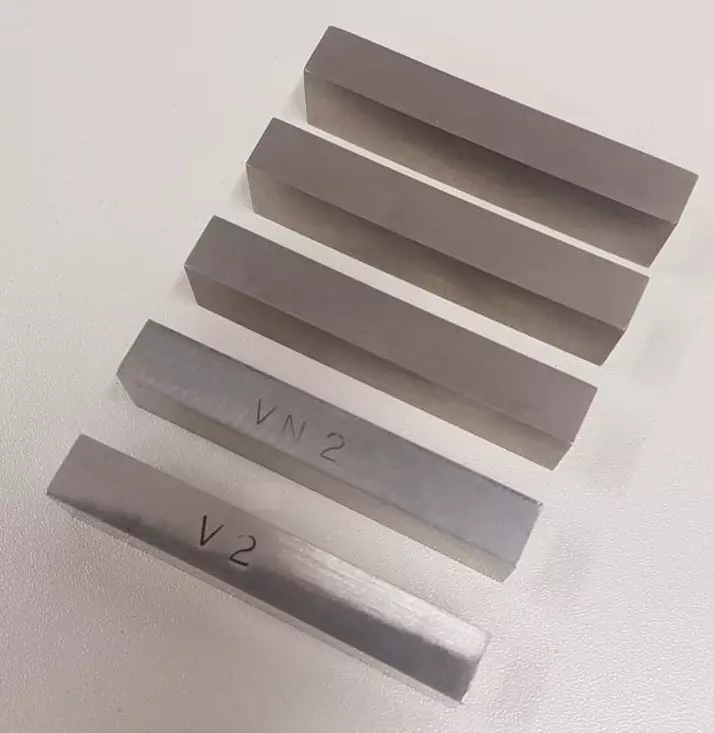FAQ: What is the best steel for ultrasonic horn manufacturing? VND or VC131? It is for mask manufacture. Mr. H.N.

Samples of sonotrode possible materials.
You can use VND, VC131, K110 or D2 (1.2379). D2 is quite common in Brazil and K-110 in Europe. After machining, it is necessary to quench and, after that, temper the horn to a hardness around 60 HRC.
FAQ: In the past we were using heat-treated 2379, but we faced some problems. Then we switched to Toolox 44 and we did a few sonotrodes. But now we measure with your device [TRZ Analyzer] and understand that our steel sonotrode has a lower antiresonance frequency (19800 Hz) and impedance (1500 Ω) than before hardening. As you know, we are making ultrasonic welder, so if we decrease the length, the frequency will increase. My question is: Will the antiresonance impedance also increase? Mr. O.D.
I am not sure if the material you used is good for ultrasonics, VND, VC131, K-110 and D2 (1.2379) are the most common ones. The material is critical for the mechanical quality factor (Qm) and antiresonance impedance. In general, steels already have greater internal damping (energy loss) than aluminum and titanium.
The frequency you reported, 19800 Hz, is too low for 20 kHz machines’ typical tolerances (±50 Hz) and for proper matching with booster and converter, which may also be the reason for low antiresonance impedance. You should reduce the horn length in order to increase its frequency. During the tests, keep the acoustic stack in the horizontal position free to vibrate and avoid touching any surface. When the horn frequency does not match the converter one, the impedance and the mechanical quality factor both decrease. After tuning the horn, the antiresonance impedance may rise.
Learn more about tuning of ultrasonic horns.
